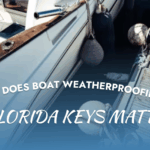
How Mangrove Marshes Protect Mangrove Marina and Coastal Ecosystems
The Florida Keys are famous for their clear waters, colorful coral reefs, and abundant marine life. But at the core of this beauty is an unsung hero: mangrove marshes. Encircling Mangrove Marina, these hardy ecosystems are more than a pretty backdrop; they serve as natural buffers protecting the marina and the larger coastal system.
Why Mangrove Marshes Matter
Mangrove marshes are thick forests of salt-tolerant trees found at the interface of land and sea. Their roots extend into the shallow waters and provide shelter to marine creatures as well as protect human structures, including Mangrove Marina.
Key Benefits of Mangroves
- Erosion Control: Dense root networks stabilize the shoreline.
- Storm Protection: They act as natural buffers against hurricanes.
- Water Filtration: Mangroves filter pollutants before they reach open waters.
- Biodiversity Hotspots: They provide nurseries for fish, birds, and crustaceans.
Mangroves as Coastal Shields
Mangrove swamps are the first line of protection for coastal communities, providing a natural buffer that protects human development and marine ecosystems. Their complex root structures and thick canopies act as wind and water barriers.
Reducing Storm Surge Impact
When hurricanes or tropical storms slam into the Keys, mangrove marshes take the brunt of the wave energy. It also reduces flooding and damage to marinas, docks, and other nearby infrastructure.
Preventing Coastal Erosion
Roots of mangroves attach to the soil and the sediment. Absent those, strong tides would erode the shoreline at Mangrove Marina, endangering real estate and access to boating.
Mangroves and Water Quality
One of the most overlooked benefits of mangrove ecosystems is their ability to maintain clean and healthy waters.
Natural Filtration Systems
Mangrove marshes are filters. They capture sediments, soak up excess nutrients, and remove pollutants from the water runoff before it enters the ocean. That was part of the point, for cleaner waters for marina operations, boating, and marine habitats.
Supporting Coral Reef Health
Mangroves trap sediment and pollutants, preventing them from releasing toxic material that chokes coral reefs in the vicinity. This connection shows why mangroves are so important for the broader coastal system.
Biodiversity Supported by Mangrove Marshes
Mangroves act as nurseries for many marine species. Young fish, crabs, and shrimp hide among the root systems for protection from predators until they are big enough to go out onto open water or find other hiding places. Birds and manatees, and dolphins also realize benefits, though indirectly, from this abundant source of food.
Species Relying on Mangroves
- Snappers and groupers (important for local fisheries)
- Crustaceans like crabs and shrimp
- Wading birds such as herons and egrets
- Endangered species like manatees that feed on the surrounding seagrass
Threats Facing Mangrove Marshes
Conservation of mangroves is critical to the long-term sustainability of Mangrove Marina and its neighboring communities. Mangrove ecosystems are threatened, despite their significance.
Major Challenges
- Coastal Development: Clearing mangroves for housing or infrastructure.
- Pollution: Runoff and plastics weaken mangrove health.
- Climate Change: Rising sea levels and stronger storms put pressure on habitats.
Conservation at Mangrove Marina
Conservation at Mangrove Marina is not just about preserving the surrounding mangrove habitats; boaters and visitors are also involved. When boaters embrace sustainable practices on the water, they contribute to preserving the natural order that makes the Florida Keys so special.
Sustainable Boating Practices
Boaters can contribute to a healthy mangrove by minimizing their wakes in shallow water near shorelines, refraining from anchoring in shallow water, and practicing responsible pump-out station use.
Community Education
Organised workshops and eco-tours from Mangrove Marina can help bring the importance of mangroves in safeguarding the environment and human livelihoods to the forefront of people’s minds.
Partnerships for Restoration
Partnerships with conservation groups can aid in replanting degraded areas and tracking mangrove condition through time.
Conclusion: Guardians of the Keys
Mangrove marshes are not just part of the scenery at Mangrove Marina—they’re living shields that protect coastlines, support biodiversity, and maintain water quality. By appreciating and protecting these natural shields, marina communities can protect both their way of life and the ecosystems that make the Florida Keys one of the most beautiful maritime regions in the world.
Act now, contribute to mangrove conservation initiatives, boat in an environmentally friendly way, and help protect Florida’s coastal treasures.
FAQs
How do mangroves help protect Mangrove Marina from storms?
Their thick roots and canopy soak up wave energy, mitigating damage from storm surge.
Why are mangroves good for water quality?
They trap sediments and pollutants, so runoff doesn’t enter open waters.
What animals rely on mangrove habitats?
Young fish, crabs, shrimp, wading birds, and many other animals depend on mangroves for survival.
What can boaters do to protect mangroves?
By steering clear of wakes near shorelines, through no-anchor zones, and use of marina waste facilities.





